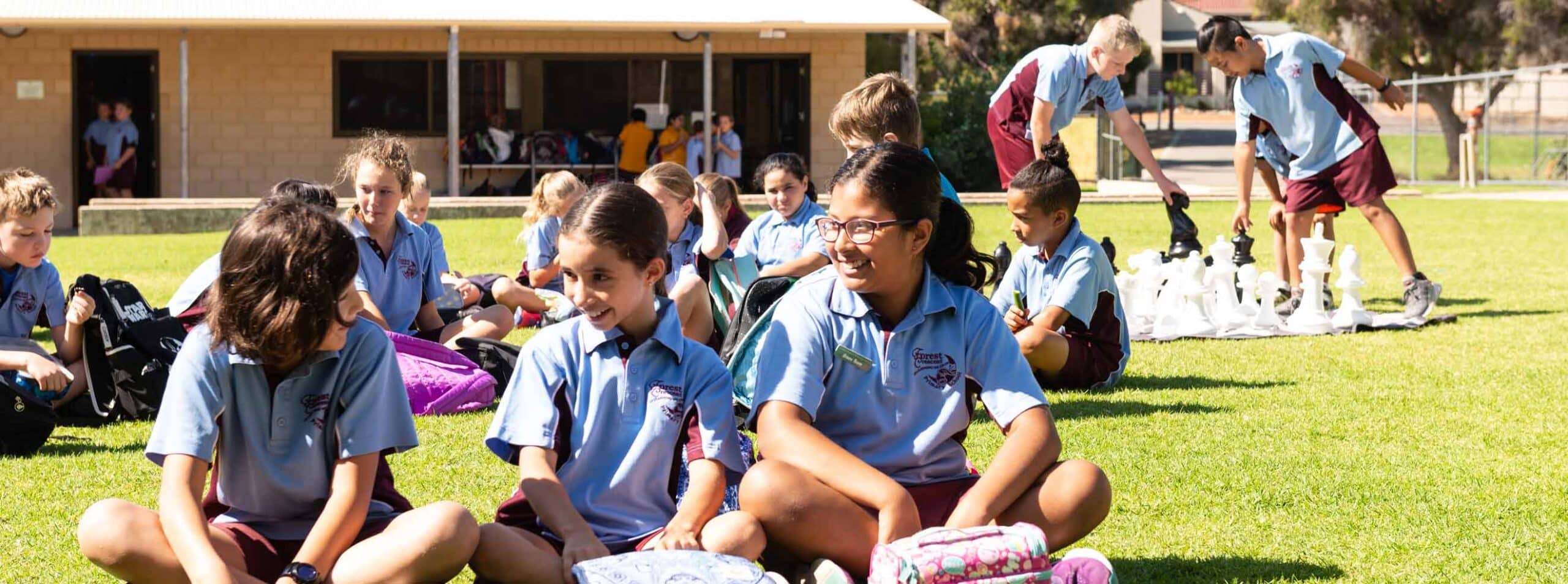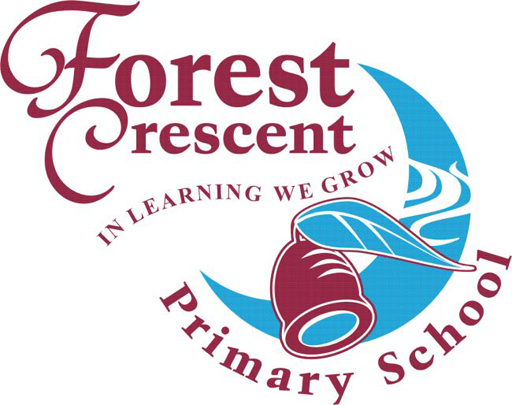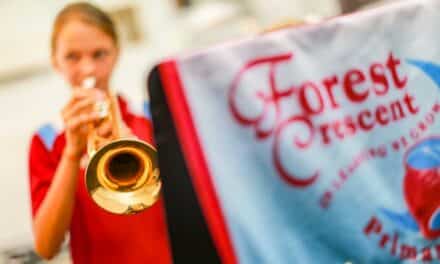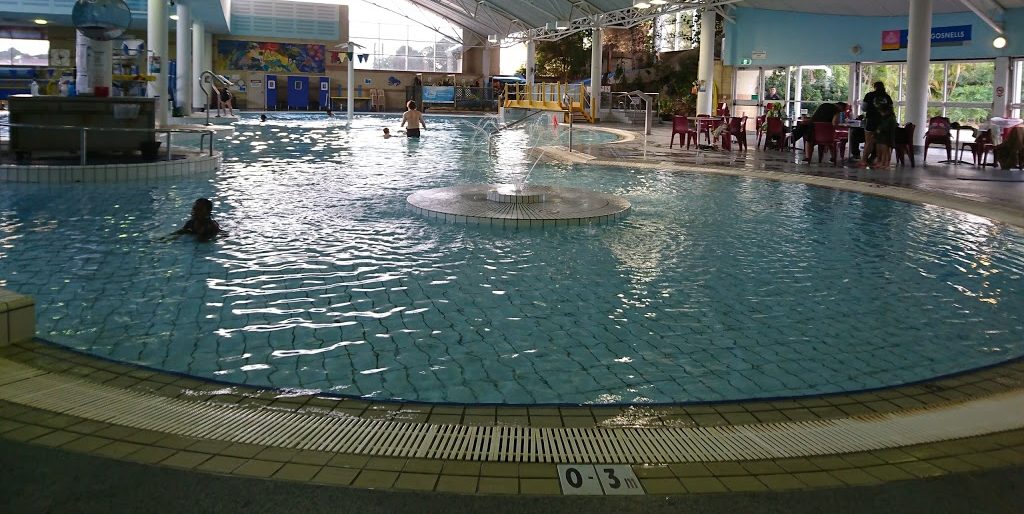 Please note, that Forest Crescent Primary is currently reviewing its school policies and will progressively update documents where needed
Please note, that Forest Crescent Primary is currently reviewing its school policies and will progressively update documents where needed
Forest Crescent Primary Student Behaviour Management 2024
Our whole school approach to student behaviour aims to provide an inclusive, safe and stimulating learning environment for students and teachers to work together. The policy is a whole school plan which supports positive student behaviour and individual support when the need arises.
Our policy is based on integrating the following values and beliefs into our code of behaviour.
Our Core Shared Values
1. The pursuit of knowledge and achievement of potential.
The lifelong disposition towards the quest for knowledge, as each person strives to understand the social and natural worlds and how best to make a contribution to these worlds. Each person is encouraged to achieve his or her potential in all respects and, through critical and creative thinking, to develop a broad understanding of his or her own values and world views.
2. Self-acceptance and self-respect.
The acceptance and respect of self, result in attitudes and actions that develop each person’s unique potential physical, emotional, aesthetic, spiritual, intellectual, moral and social. Encouragement is given to developing initiative, responsibility, ethical discernment, openness to learning and a sense of personal meaning and identity.
3. Respect for the concerns and rights of others.
Sensitivity to and concern for the well-being of other people and respect for life and property. Encouragement is given to each person to be caring and compassionate, to be respectful of the rights of others, and to find constructive ways of managing conflict. This includes the right to learn in a friendly and non-coercive environment
4. Social and Civic responsibility
The commitment to exploring and promoting the common good and meeting individual needs without infringing the basic rights of others. This includes the encouragement of each person to participate in democratic processes, to value the diversity of cultural expression, to respect legitimate authority, to promote social justice and to support the use of research for the improvement of the quality of life.
5. Environmental responsibility
The commitment to developing an appreciative awareness of the interdependence of all elements of the environment, including humans and human systems, and encouraging respect and concern for Australia’s natural and cultural heritage and for forms of resource use that are regenerative and sustainable.
Download FCPS Behaviour Management Policy 2022
Forest Crescent Primary Bullying Policy 2024
At Forest Crescent Primary School, we are committed to creating a safe and caring school environment for students, teachers, and community members by developing relationships based on care, mutual respect, and open communication. Our Bullying Management Policy complements our Student Behaviour Management Policy and should be read in conjunction.
Bullying, in any form, will not be tolerated at our school.
PURPOSE
- To give all members of the school community a shared understanding of what constitutes bullying and harassment.
- To provide a clear procedure to deal with bullying.
- To maintain a commitment to the school ethos and purpose of providing a safe and caring environment free of bullying and harassment.
Download FCPS Bullying Managment 2022 Document
Forest Crescent Primary School- School Dress Code
A school’s dress code can play an important role in promoting a positive image of the school and creating a sense of identity. There are many reasons to introduce a code of dress for students (eg student safety can be improved because they can be identified more readily, and generally, the cost of uniform items is less than alternative clothing); however, it is up to individual School Boards to determine what is appropriate for that school’s circumstances.
This school has a proud reputation when it comes to the wearing of school uniform, and our School Board acknowledges the importance of having a School Dress. This code makes clear the intent of the School Board that students attending Forest Crescent Primary School wear the correct school uniform for reasons of student health and safety.
RELEVANT LEGISLATION
- School Education Act 1999, sections 128(d), 140(d) and 123
- School Education Regulations2000, Regulations 33 to 36
- Occupational Health and Safety Act of 1996
- Equal Opportunity Act of 1984
The current school uniform was decided upon by the P&C and endorsed by the School Council. The current School Uniform is as follows:
Uniforms – BOYS
- School polo shirt with emblem*
- Burgundy Rugger shorts*
- Burgundy zip jacket*
- Burgundy track pants
- Suitable footwear (enclosed shoes, sneakers or sandals).
- Sunsafe Hat (Wide Brimmed or Legionnaires)*
Uniforms – GIRLS
- Burgundy & white check dress, A-line style, zip dress (Size 4-10)*
- Burgundy skort*
- School polo shirt with emblem*
- Burgundy zip jacket *
- Burgundy track pants
- Suitable footwear (enclosed shoes, sneakers or sandals).
- Sunsafe Hat (Wide Brimmed or Legionnaires)*
- Hair Accessories*
Sport – Boys /Girls
- Faction coloured polo-shirt *
- Burgundy shorts * (Boys) Burgundy skort * (Girls)
- White socks, suitable footwear
- Tracksuit (winter)
- Sunsafe Hat (Wide Brimmed or Legionnaires)*
*Items sold through the School’s P & C Uniform Shop
Please Note
- Denim is not to be worn at school
Dress Code
- UNIFORM – in the case of a student not wearing a school uniform, staff will:
- First Instance: The teacher will speak to the child and remind them of the school dress code.
- Second Instance: The teacher will send the child to the Deputy to reinforce the requirement of adhering to the dress code. This may include a note home or a phone call to the parent.
- Third Instance: The Deputy will contact the parent via note home or email to remind the parent/caregiver of the uniform policy.
- RAIN JACKETS – As jackets will be removed when a child is inside the classroom, there is no formal outline for the style or type. The main purpose of a jacket is to keep the children warm when they are outdoors. Children are not to wear jackets, however, in place of the school uniform jumper whilst at school.
- HAIR – Hair on any student that is longer than the top of the shoulder is to be tied back at all times whilst at school. This is an Occupational Health and Safety issue. Colour sprayed hair is not permitted unless for a dedicated “Crazy Hair” or Faction Carnival day.
- MAKE-UP– Students are not permitted to wear make-up or coloured nail polish to school.
- JEWELLERY –It is recommended that students do not wear jewellery to school. Any jewellery must be appropriate and not endanger the child wearing it or others around that child. If earrings are worn, they must be studs and/or small sleepers. Students will be asked to remove excessive jewellery, and it will be safely stored by the class teacher until the end of the school day.
- FOOTWEAR – It is important to ensure your child has suitable footwear when at school. For safety reasons, no thongs, backless slip-ons or high-heeled shoes are permitted. NO CHILD will be allowed to take part in any out-of-school activity without suitable footwear. NB: Beach-style sandals are not suitable.
- HATS—FCPS is a Sun-Safe School, and therefore, we adhere to a “No Hat, No Play in the Sun” policy throughout the year. This policy reflects the importance of shading the face/head from the harmful rays of the sun. As such, the only hats that will comply with the policy will be the broad-brimmed or legionnaire hat. The school sells burgundy broad-brimmed hats and legionnaire hats at the school uniform shop. Brand-name hats are not permitted.
Discusses the criteria and expectations for our school captains.
5/06/2007
AIM
Forest Crescent Primary School aims to develop the school, personal growth in the areas of- leadership, decision-making citizenship
RATIONALE
Students in their final year at primary school need to be given the opportunity to demonstrate and develop responsibility. There are many who, during their years at school, have shown qualities which indicate they can contribute to the school in terms of:
- providing good role models for other children
- contributing a student’s point of view in relation to school operations and procedures
- assisting in suitable tasks that facilitate the smooth day-to-day running of the school.
These students will be identified through the selection process and in their resulting roles as school captains, not only contribute to the school but develop their personal capabilities and character.
CAPTAIN PROFILE
In order to nominate for the position, each student should:
- display a high standard of behaviour at all times in and out of the classroom
- be a good representative and leader for all students
- wear the school uniform with pride
- show the values of respect, courtesy, tolerance, friendliness and caring to all members of the school community
- be prepared to give up some of their own time to carry out duties
- value the position
- respect the school rules and procedures
- show leadership qualities
- possess the ability to communicate confidently with both peers and adults
- display a positive attitude and effort in academic studies
- actively participate in school activities
STRUCTURE
In Term 4, each year, 8 captains (4 boys and 4 girls) will be selected. Two of the 16 will be a Head Boy and a Head Girl. The positions of Head Boy and Head Girl will be appointed from the 8 successful candidates by a Selection Panel made up of relevant staff (those teachers who have had an association with the candidates) and Administration. (Usually, this is the boy and girl with the most votes.) Students will be initially selected from the votes by students from Years 4 and 5 and the outgoing Year 6 captains.
DUTIES
Will include the following:
- Welcome visitors to the school
- assist at school carnivals
- hand out and collect sports equipment at recess and lunch
- host school assemblies, give reports, judge assembly behaviour
- promote school rules by example
- wear the school uniform with pride
- organize and coordinate appropriate school activities
- represent the school at official functions
- sound the school siren
- fly the appropriate flags
- collect the school mail
- lock and unlock the bicycle and basketball enclosure
- deliver duty files in the morning
- collect and count faction tokens
- P.A. announcements for duty
- bring in recycle bins
- set up and dismantle the assembly
- other duties as required
SELECTION
Early in the school year, Year 5 students will be made aware of the qualities required for nomination as a School Captain. Those students who do not meet the criteria outlined in the School Captain Profile will not be invited to nominate. This assessment will be made by the Year 5 teachers in consultation with the Selection Panel. (Made up of teachers who teach these students)
One of the criteria concerns “a high standard of behaviour at all times.” Students whose names are placed in the MSB book (playground and classroom) will need the incidents reviewed to determine their suitability. This will be left to the discretion of the Year 5 teachers.
The nomination process will take place in mid-Term 4. Nominees will be given a written notice to be taken home, discussed with parents, and returned to school, signed. Elections will then take place.
VOTING
All candidates are placed on the appropriate ballot paper. Students and applicable teachers then rank candidates in order of preference beginning with number 1 for their first preference. The votes are then tallied. The names of the 4 students from each gender with the lowest tally will then be put forward for ratification by the Selection Panel.
PRESENTATION
Captains are named and presented with badges at the Awards Night at the end of the year. Parents of the appointed captains are officially invited to the Awards Night.
INAPPROPRIATE SCHOOL CAPTAIN BEHAVIOUR
The Year 6 teachers, the Captains’ Coordinator and the Principal will take action if a School Captain’s behaviour is deemed inappropriate. This may include counselling given a chance to improve the suspension for a period or replacement
RECOGNITION AND REWARDS
To recognise the efforts of the School Councillors, the Coordinator may, at his/her discretion, reward them throughout the year. For example, a certificate at the ‘all school’ end-of-year assembly party (per semester)
COORDINATOR
The coordinator is to be either a Year 6 teacher or an Administrator. The coordinator’s duties include:
- ensuring captains carry out their duties
- monitoring their performance
- preparation of rosters for captains’ duties
- coordinating their rosters
- organising the certificates for judging at the assembly
- facilitating the organization of activities run by the captains
- organize rewards and recognition for the captains
- liaise with captains whose performance is not satisfactory
About Our Evacuation Policy
12/3/2019
EMERGENCY – EVACUATION PROCEDURES: 2024
All class lists in the Evacuation File to be reprinted at the start of every term
Refer to the Evacuation Map for evacuation paths & assembly areas
IN THE EVENT OF A CLASSROOM EVACUATION eg. FIRE
1. This will be signalled by short, repeated blasts of the siren.
2. Children are to be immediately evacuated to the oval as per evacuation procedures.
3. If risk lies in the designated path, the teacher will seek the next best path to the oval.
4. If the oval is unsuitable, teachers will be directed by the Principal to an alternative location.
5. If the initial designated assembly area is compromised by smoke or fumes, then the school will reassemble at the public open space “Forest Crescent Reserve”.
IN THE EVENT OF AN EARTHQUAKE
1. Children and staff are to take protection UNDER their desks.
2. If outside, please move to an area away from buildings and trees.
ADMINISTRATION RESPONSIBILITIES
The principal and staff are to collect their mobile phones (only if accessible) and move to an oval or designated assembly area.
Deputy 1 – Lead evacuation and search. Loud hailer. (Mr Combes)
Deputy 2 – Check class numbers and students. Collect First Aid Kit and Evacuation Class Lists (Ms Sandhu).
Deputy 3 – Check staff and visitors. Search. Collect First Aid Kit & Defib Kit (Ms Davies or Mrs Spencer).
Manager Corporate Services – Collect visitor book. (Mrs Caniglia)
EVACUATION PROCEDURES The Evacuation Signal that the school is being evacuated will be repeated siren blasts and the announcement “Evacuate” over the P.A. or, in the event of a power failure, the ringing of a handbell with the call out: “Evacuate, Evacuate, Evacuate.”
Upon hearing the evacuation signal, each teacher will:
- Check the learning block wet area for students. Collect the class roll (weekly attendance printout). If the class teacher is on DOTT, the class teacher DOES NOT return to the room but goes directly to the oval to meet their class and to assist specialist teachers in checking students. When the class has been checked, the specialist teachers will report to the Principal to assist as directed. Kindy and Pre-Primary EAs to check the internal toilets of their respective Kindy and Pre-Primary rooms before moving class out with the teacher.
- Have the class exit the building through the nearest external door and move to the lakeside area of the oval, keeping clear of school buildings where possible (See Evacuation Map for movement from classrooms)
- The School Officers will check administration rooms, lock the front office door, place “Closed for Evacuation”, and walk to the assembly point on the oval (taking any sick children with them).
- Education Assistants and ancillary staff will move to the oval or assist in the orderly movement of children as appropriate.
- Canteen staff/workers and school visitors are also to make their way to the oval’s safety.
- Deputy 1 (Blocks 5 & 6) and Deputy 3 /Principal (Blocks 2 & 4) will check the toilets on their way to the oval.
- At the oval, each class teacher will call the attendance roll and ascertain the names and possible whereabouts of any missing children. Class teachers raise their hand to signal that they are missing a student. They will keep their hand raised until attended by Ms Sandhu.
- Deputy Principal 2 (Ms Sandhu) will check the names of missing children and their possible whereabouts.
- Manager Corporate Services (Mrs Caniglia) will check for names of missing staff and visitors (see Visitors Book).
- Deputy Principal 1 (Mr Combes) will search for a missing person(s) if deemed necessary. No one else is to go looking for a child.
- Deputy Principal 3 (Ms Davies/Mrs Spencer) will remain on the oval in charge of the teachers and children.
- First aid given by Deputy Principal 2 (Ms Sandhu) and/or any other qualified senior first aider if required.
- Teachers are to keep students safe and calm while moving and on the oval. They also reassure students after the event and assess any further support they require.
- The Principal will remain in overall charge, directing firefighters/police and communicating with the appropriate authorities. To assess and organize de-briefing and counselling as required.
- If evacuation is necessary during lunch or recess, Staff and Children are to make their way to the oval, where children will report to their teacher.
No one is to go back into classrooms in this situation
EMERGENCY – LOCKDOWN PROCEDURES: 2019
IN THE EVENT OF A LOCKDOWN
1. This will be signalled by three short siren blasts followed by an immediate PA announcement (Principal, Deputy Principals or Business Manager). The PA announcement will inform staff and students if it is an external (intruder) or internal (critical incident) situation.
2. Staff and students, please return to their classrooms, lock doors and close blinds. If a class is outside or at recess/lunch, students and teachers must proceed quickly back to the classroom.
3. Front office staff to lock office and staff room.
4. Front office staff should ring classroom blocks and demountable classrooms to inform a staff member of the situation. This person should relay information to staff within the block.
5. The principal to inform relevant authorities of the situation (Police, Emergency Services, Regional Office)
6. Teachers and Education Assistants to reassure students by keeping them calm and safe.
7. Staff and students are not to leave locked classrooms until the PA announcement that the situation has been resolved.
8. Principal/ Deputy Principals to de-brief staff as required after the event.
To provide regular opportunities for students to share homework experiences with parents who are requested to supervise the completion of formally set homework AND to initiate some informal homework
5/06/2007
To provide regular opportunities for students to share homework experiences with parents who are requested to supervise the completion of formally set homework AND to initiate some informal homework experiences as set out in the following policy.
Years 1 and 2
Homework centres upon READING set by the teacher. This will take about 15-20 minutes.
At the beginning of Year 1, your child may need you to read the books to them. Your child reads out aloud when able.
Action
- The parent DISCUSSES the story and ASKS QUESTIONS about what has been read.
- The parent signs the Reading card.
- The child practises sounds.
- Children in Year 2 may be expected to practice SPELLING at home as well.
Years 3, 4 and 5
READING may be set by the teacher. This homework will take about 15-20 minutes. Your child may select a book to take home to read from available reading material or may be asked to select from personal/library books.
Action
- The child reads SILENTLY at first.
- The child reads part OR all text aloud.
- Parent DISCUSSES the story and ASKS QUESTIONS about what has been read
BASIC + – x ?· TABLES practice as much as possible.
MATHS – up to 20 minutes nightly may be set by teachers where the need exists.
Neat written and printed presentation is expected with all written homework.
SPELLING – Children may be required to revise spelling lists regularly.
Years 6 and 7
All children have at least 30 minutes of homework each school evening.
Action
- 10 minutes basic +-x?· tables practice
- 20 minutes of SILENT reading from reading texts or library materials
- Some reading aloud to parents could also be done.
- Children may go over SPELLING words for 10 minutes as well.
- Special needs children will have specific homework programs developed in consultation with parents. A neatly written and printed presentation is expected with all written homework.
In Addition Years 1,2,3,4,5,6, and 7
- Teachers may require children to…
- Complete unfinished work at home
- To undertake special research projects
- To locate current event items
- To practice sets of examples where the need clearly exists
- Children may also do written work of their own choice at home.
*** Parents who do not want their children to take part in the school’s homework program are requested to write to class teachers with this request.
The Health Department provides guidelines for the school on communicable diseases.
5/06/2007
Infectious Diseases
The Health Department provides guidelines for the school on communicable diseases.
Below are a few common diseases; for further information, contact your local doctor.
Disease & Period of Communicability Exclusion
- Conjunctivitis While eye discharge is present, Exclude until discharge from the eyes has ceased
- Chicken Pox From 2 days before the rash until all blisters have crusted. Exclude until at least 5 days after the eruption first appears. Some remaining scabs do not justify the exclusion
- Glandular fever Not known. Exclude until the child is well
- Measles: About 4 to 5 days before the rash begins until the 4th day after the rash appears. Exclude for at least 4 days after the onset of the rash
- Head Lice Until lice and nits (eggs) are destroyed. Exclude until treatment has commenced
- Non-immunised measles contacts should be excluded from school for 13 days after the appearance of the rash in the last case identified in the school unless the contact was immunised within 72 hours of first exposure. Immunisation is available for Measles/Rubella/Mumps vaccine from 12 months of age onwards.
The Health Department advises that there are serious concerns about measles immunity levels in the community. Measles can cause numerous complications, brain damage, or death. Parents are advised of the following procedures, which should be adopted. The onus is on the parent to advise the school if their child has been immunised; otherwise, we will presume that your child has NOT been immunised.
Please contact the school office if you have information or a query.
Head Lice School Policy
The following is a brief outline of what happens when a child is found to have head lice:
- The child is given a brief age-appropriate explanation about head lice.
- A Deputy will phone parents to notify them and a letter is sent home to the parents of the child at the end of the day.
- It informs the parent that their child has head lice and advises them that, as required by The School Education Act, the child must commence head lice treatment before returning to school.
- Enclosed is a copy of the Department of Health’s Head Lice Fact Sheet. All children in the class receive a letter notifying parents of lice in the school and asking them to check their children’s hair.
- The recommended treatment is the Hair Conditioner 10-day method. Once treatment has commenced, the parents of the child with head lice should send the child back to school with a letter confirming treatment has commenced.
- If the child again returns without evidence of treatment, the Principal or delegate will contact the parents and advise that the student is immediately excluded from school until treatment has commenced and the school has notified. Assistance will be offered by a Deputy or school nurse.
- Homework will be provided for the student. Where a student continues to be absent from school without due reason, the matter will be dealt with in accordance with the Absenteeism Policy. Head Lice infestation is easily treated and is not a disease.
Immunisation
The Health Department of Western Australia recommends that the following schedules be followed for routine immunisations.
Vaccine Age
- DTP Diphtheria / tetanus/ pertussis 4 years
- OPV Oral polio vaccine 4 years
- MMR Measles \ mumps \ rubella 4 years
- ADT Tetanus Booster 10 – 16 years
- Hep B Hepatitis B virus 10 – 16 years
The Education Department of WA has provided to schools Policy Procedures in relation to the administration of medication.
5/06/2007
Rationale
The Education Department of WA has provided schools with Policy Procedures regarding medication administration. A brief description is outlined below, and a copy is available at the office for parents to read.
Procedure
Where there is an agreement between staff and parents through written instructions by a Medical Practitioner and Parent/Guardian, school staff can administer prescribed medication.
School staff are not expected to administer prescribed medication or treatments that require specialist training, such as giving injections.
Parents are to advise the school if their child requires the use of an inhaler (puffer). The child will be able to self-administer, provided relevant information is given to the class teacher.
Documentation
Documentation of all administration of medication action plans and agreements to perform the necessary functions (e.g., listing times, doses, and dates of medication outcomes) is required. These functions must be carried out and recorded on standard notification forms (available from the school office) whenever school staff undertake to assist in the administration of medication to students. The students should administer their own medication where capable of doing so and have authorisation for the taking of medication. The student may be supervised/assisted by school staff in administering their medication where there is an agreement to do so.
Storage of Drugs
Class A drugs (ADD medication and the like) will be stored in a locked cabinet in the Administration Area. It is the responsibility of the student to come to the office at the stipulated time to receive the necessary medication from the member of the Administration Team who is available at that time. The name of the child, date, quantity administered and the name of the drug will be placed on a recording sheet each time a child is given medication, These sheets are required to be kept in the school until the pupil is aged 25 years.
Drugs requiring short-term administration (antibiotics, dental treatment, period pain, etc.) may be kept in the Administration area or the first aid room fridge. They are to be administered by school staff where an agreement to do so has been reached. Record the doses given on the Drug Administration Record Sheet. All documentation is to be kept in the school for one year.
Non Prescription Drugs
School staff must not administer analgesics such as paracetamol to students without written instruction from the student’s parent/guardian or Medical Practitioner. The form Student Medication Request/Record may be used, with the line referring to the prescribing doctor ignored. Where possible, parents/guardians should ask their doctor to stagger the doses around the school day.
Parent & Guardian Responsibilities
Parents & Guardians should complete a Medication Request/Record form, a Medication Instructions form, and a Prescribing Doctor form and notify the Principal or Deputy Principal(s) of all relevant details of medication to be administered during school hours. It is the Parents’/Guardians’ responsibility to provide the school with adequate information regarding the details of the child’s medical condition, which may require specific action and/or treatment under emergency conditions (i.e., arising from asthma, diabetes, and serious allergic reaction).
If necessary, an emergency action plan will be developed between the school, parents/guardians, family doctor, and school nurse. Copies of the Emergency Individual Care Plan form are available from the school office.
Students should not bring bulk supplies of any drug to school.
Medication that IS NOT labelled correctly will not be accepted for use. It is the parents’/guardians’ responsibility to ensure that the medication is clearly labelled, is not out of date and is provided in sufficient quantities for the child’s needs.
A suggestion for children needing to have their drugs stored in the Administration is for the parent/guardian to provide a one-week pill dispenser. This way, the correct dosage for each day can be placed in the named division, and the container can be sent to school on Monday morning. The empty container will be given to the child on Friday to take home for the following week’s doses to be brought in on a Monday.
The prevention of harmful and unlawful drug use is supported by Forest Crescent Primary School. The following preventative measures will be implemented.
5/06/2007
This policy aims to:
1. promote and maintain a healthy school environment in which the welfare of all school community members is paramount;
2. identify how Forest Crescent Primary School can contribute to the prevention of drug-related problems; and
3. document the school communities agreed position on, and accepted procedures for dealing with, drug-related incidents and problems.
Prevention
The prevention of harmful and unlawful drug use is supported by Forest Crescent Primary School.
The following preventative measures will be implemented:
- A well-resourced, relevant health education program that includes drug education for K-6.
- Yearly visits from the Life Education W.A. van supplement this program.
- Information provided by the Health Department is included in the resources available from the school library.
- Regular professional development for staff teaching health education.
- The Life Education W.A. van provides a session for both parents and teachers during the time it spends in the school.
- Involvement of parents and community members in health and drug education programs.
- Regular review of this school drug policy.
This policy, the school health education and promotion program, is consistent with the State Government’s policy framework of the Western Australian Strategy Against Drug Abuse. It stresses the need for a comprehensive approach and emphasises two principles: first and foremost, opposition to drug abuse and second, harm reduction.
Intervention
Intervention procedures are designed to address alcohol, tobacco and other drug-related problems and ensure the health and well-being of all parties concerned. All intervention procedures conform to legal requirements.
Forest Crescent Primary School does not permit students, while on school premises, at any school function, excursion or camp to:
- Smoke and/or possess tobacco products;
- Consume and/or possess alcohol;
- Deliberately inhale volatile substances (solvents);
- Possess and/or use pharmaceutical drugs for non-medical purposes;
- Possess and/or use illegal drugs in accordance with the Misuse of Drugs Act 1981; or Possess and/or use drug-related equipment, such as syringes, bongs or pipes (except in the case of lawful medical use).
- The School Administration must be notified if students need to administer prescribed medicine while at school.
Smoking
A Deputy Principal will notify parents/caregivers, and a letter will be sent home if a student smokes on school premises. The cigarettes confiscated will be handed over to the parents. Students will be offered counselling and will face disciplinary action in accordance with the school community’s Managing Student Behaviour Program.
Alcohol and Solvents
Possession and/or consumption of alcohol or deliberate inhalation of solvents by children will require a Deputy Principal to contact parents/caregivers and send a letter home. All substances confiscated will be handed over to parents. Students will be offered counselling and will face disciplinary action in accordance with the school’s Managing Student Behaviour program.
Illicit Drugs
Parents or caregivers of students with illicit drugs will be informed immediately. The Principal will call the police. In the absence of a student’s parent or caregiver, the student support person or a teacher nominated by the student will always be present at any police interview that takes place on school premises. The student will be offered counselling and face disciplinary action in accordance with the school community’s Managing Student Behaviour program.
Forest Crescent Primary School is committed to the provision of a safe learning environment for all students. When concerns about drug use arise in the school community, the school will cooperate with key agencies such as the police to determine what actions are appropriate to maintain a safe environment.
Take Control
Useful Contacts
Principal
Deputy Principals
Local Community Drug Service Team Alcohol and Drug Information Service 08 9442 5000 Toll-free 1800 198 024
Parent Drug Information Service 08 9442 5050
Local Drug Action Group Southern District – Hm 08 9459 6639. Wk 08 9452 0010
It is the policy of Forest Crescent Primary School that students will use the Internet in a responsible manner and be consistent with the educational objectives of the Education Department of WA.
5/06/2007
The Internet allows users to search worldwide databases and exchange messages (email) throughout the world. All classrooms have access to the Internet, but it is up to the discretion of an individual teacher as to student use. Benefits to students at this school include the support of research and education by providing access to unique resources and an opportunity for collaborative work.
It is the policy of Forest Crescent Primary School that students will use the Internet in a responsible manner and be consistent with the educational objectives of the Education Department of WA. Accordingly, Parents/guardians are asked to read and discuss the rules governing the behaviour of students who access the system with their child. Both the parent/guardian as well as the student are to sign the user agreement form and return it to school. Students who do not return a completed Internet User Agreement cannot use the Internet at school. Students who do not adhere to any part of this agreement may lose the privilege to use the system, and further disciplinary action may be taken. Parents will be notified of any infractions.
Student Agreement
Students must adhere to all the student agreement conditions listed below:
1. I will only access the Internet under the direction of a staff member.
2. I will not look for any information which is in any way unacceptable. (eg. Internet information dealing with pornography or unrelated to school curriculum).
3. If I find a site that I think is not suitable, I will report it immediately to a school staff member.
4. Before copying anything from the Internet, I will seek permission from a staff member.
5. In fairness to other users, I will make my Internet use as efficient as possible.
6. I will abide by copyright law by not copying and/or distributing another person’s work and correctly acknowledging it (if I use it).
7. I will not give out anyone’s name, address or phone number unless I have the approval of a staff member and the person’s permission.
8. I will not use the Internet service to upset or be rude to anyone.
9. Students may access worldwide email facilities only with express teacher permission. All emails sent by students from school must be related to a specific classroom topic. Review This Internet policy may be revised at any time to keep up with current trends and information.











